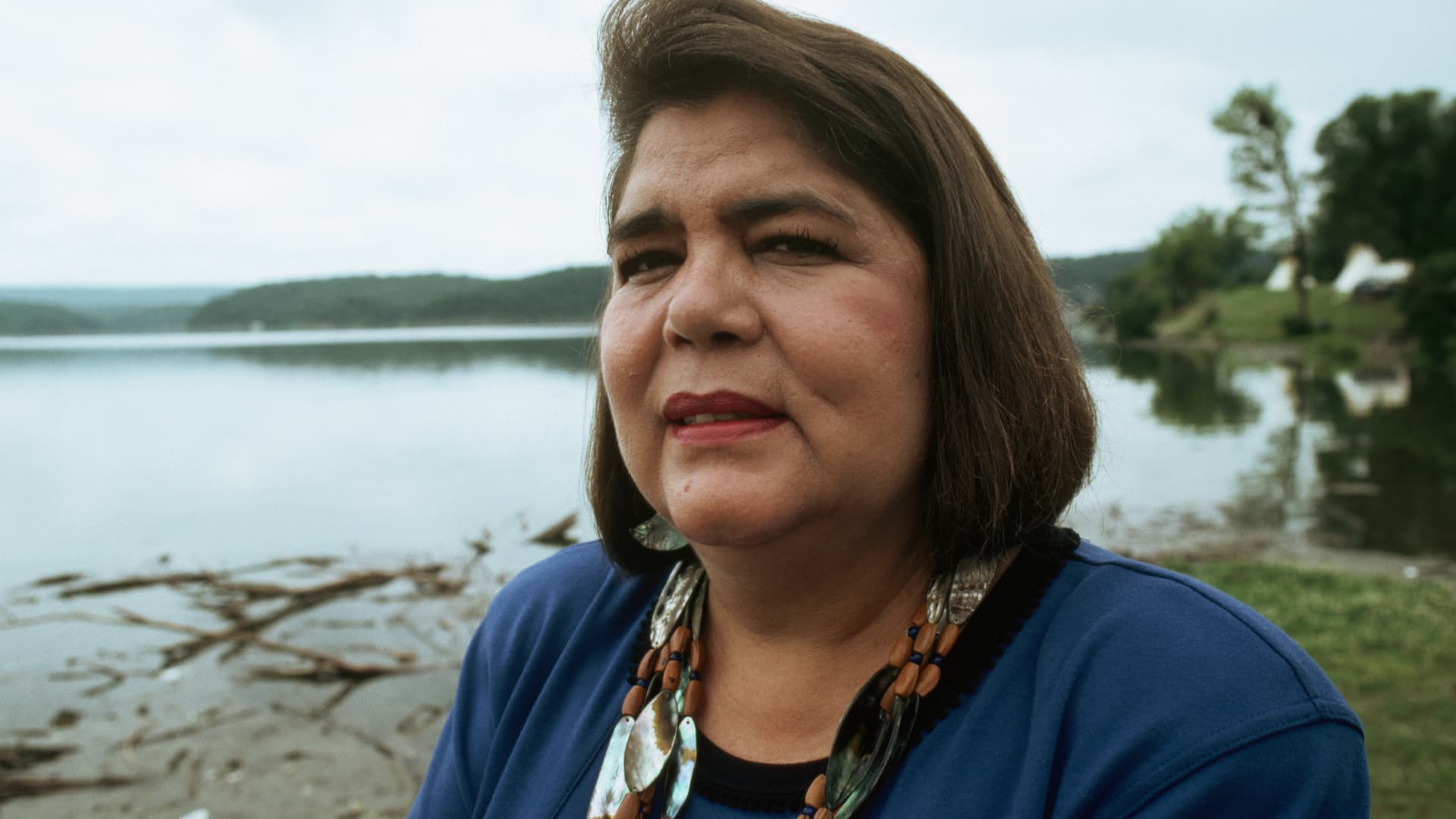
If you’re not yet familiar with the name Wilma Mankiller, you probably will be soon: The trailblazing former Cherokee Nation chief is coming to a U.S. quarter near you.
When Mankiller – whose family surname refers to an ancestral tribal military rank – died in 2010 at the age of 64, she was remembered as a feminist pioneer and fierce advocate for Native Americans. Now, she’s again being honored – this time, with her image emblazoned on a new series of U.S. quarters rolling out this year, honoring iconic women from American history.
Her quarters will begin circulating this spring, according to the U.S. Mint.
Mankiller made history in 1985 as the first-ever woman to be elected chief of a major Native American tribe. But her appointment to that position was only the beginning of her accomplishments, as she went on to transform the Cherokee Nation’s tribal infrastructure and economy.
In 1998, her leadership earned her the Presidential Medal of Freedom from then-President Bill Clinton. “She was not only the guardian of the centuries old Cherokee heritage, but a revered leader who built a brighter and healthier future for her nation,” Clinton said at the time.
Here’s what you need to know about the historic leader, and her decades of accomplishments:
An historic first
When Mankiller was 10 years old, her family left the Cherokee Nation’s capital city of Tahlequah, Oklahoma, so her father could take a warehouse job in San Francisco. She later called the move “my own little Trail of Tears,” because it took her away from her family’s tribe and her grandfather’s farm, where she’d spent her childhood.
Living in the Bay Area set her down a path of social activism. In 1969, when she was in her mid-20s, Mankiller witnessed a group of Native Americans occupying Alcatraz Island, claiming the federal land to protest the treatment of Native Americans by the American government.
In her 1993 autobiography, “Mankiller: A Chief and Her People,” Mankiller wrote: “When Alcatraz occurred, I became aware of what needed to be done to let the rest of the world know that Indians had rights, too. Alcatraz articulated my own feelings about being an Indian.”
Within the next decade, Mankiller moved back to her grandfather’s farm in Oklahoma with her two daughters, and became involved with Cherokee Nation tribal affairs. She worked on health and education programs focused on the tribe’s youth, spearheaded new housing projects and expanded rural water access as the head of the Cherokee Nation’s community development department.
In 1983, then-tribal chief Ross Swimmer invited her to join his reelection campaign as his running mate. Her candidacy inspired sexist hate mail and death threats, but the ticket ultimately succeeded, making Mankiller the first female deputy chief of the Cherokee Nation.
Two years later, Swimmer stepped down. Mankiller took over as the Cherokee Nation’s first-ever female principal chief. She’d go on to win re-election twice, winning a staggering 83% of the vote in 1991.
Despite that popularity, Mankiller said she still faced “incredible opposition” because of her gender from members of her own tribe as well as outsiders who objected to a woman holding her title. She later told NPR that her most consistent support actually came from older members of the tribe.
“I’ve always found that fascinating,” she said. “My husband and I have talked about it, and I think we’ve come to the conclusion that maybe older people have a greater sense of history — and understand that there was a time when women played a more significant role in the tribe, and there was more balance and harmony between men and women in the Cherokee Nation.”
A revitalizing force
During Mankiller’s tenure, which ended in 1995, the Cherokee Nation’s membership tripled to more than 170,000 citizens. She doubled its annual revenue by supporting Native businesses, including factories, retail stores and restaurants, bingo operations, and gift shops, among others.
She also pulled off an unprecedented move: In 1990, Mankiller brokered an agreement with the Bureau of Indian Affairs to give her tribe direct control over millions of dollars in U.S. federal funding, helping establish tribal sovereignty for both the Cherokee Nation and other tribes.
“Through self-governance, we can better determine the services needed by tribal members and fulfill those needs without the bureaucratic delays of the past,” Mankiller said at the time.
Mankiller’s primary goal was to stream as much of that money as possible into programs aimed at improving education and health care for the Nation’s citizens: She used the increased revenue to build new health clinics, create job training programs and support early-education programs. Today, experts say that the spirit of self-reliance she promoted directly inspired other Native American tribes to follow suit.
“I was trying to encourage our people to trust their thinking again, to look to themselves for solutions,” she wrote in her autobiography. “I want to be remembered as the person who helped indigenous people restore faith in themselves.”
Sign up now: Get smarter about your money and career with our weekly newsletter
Don’t miss:
Ex-U.S. Treasurer: The new Maya Angelou quarters could inspire ‘a lot of future leaders’
Mary Ellen Pleasant: How one of the first black self-made millionaires built her fortune




